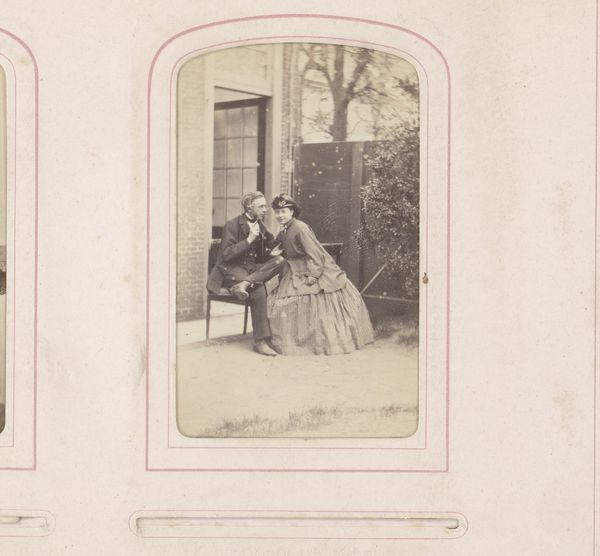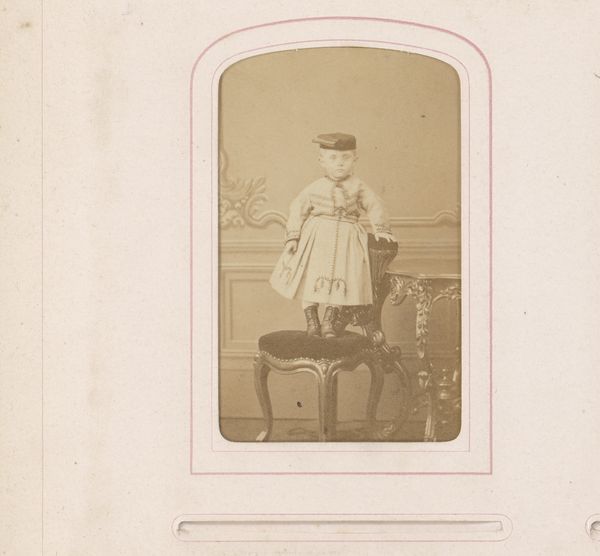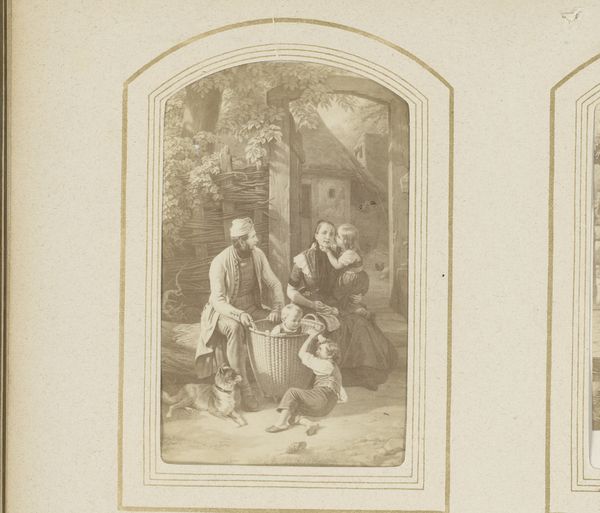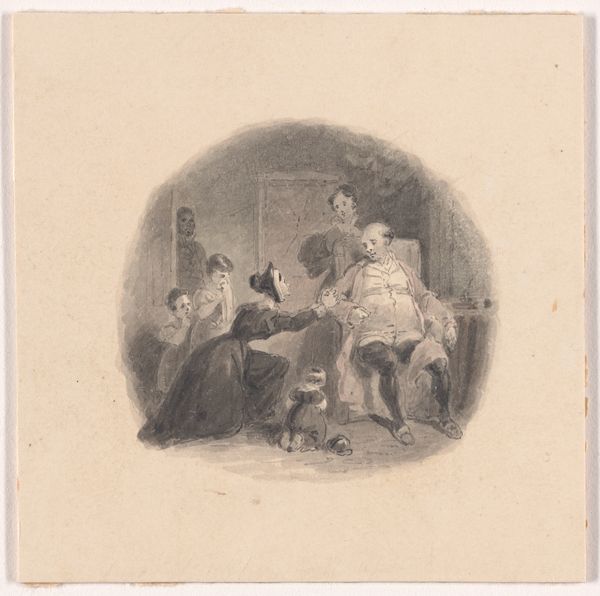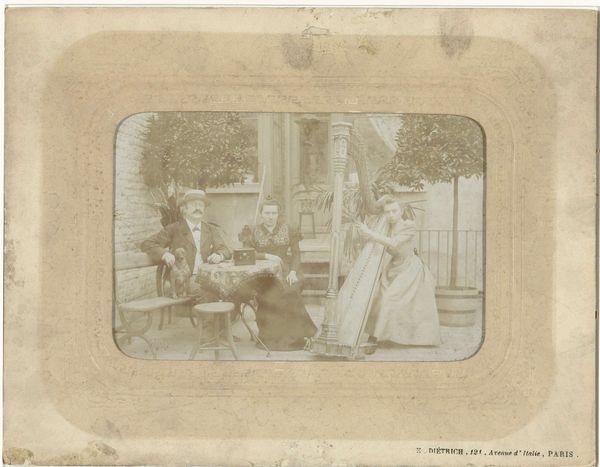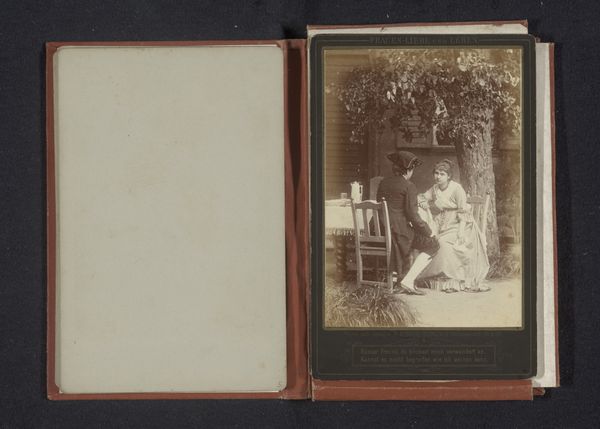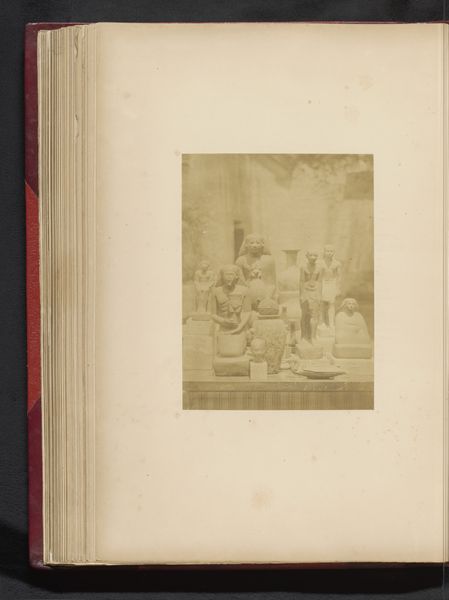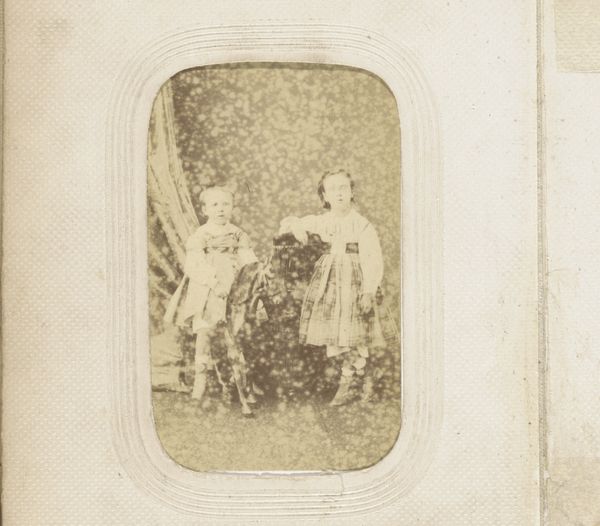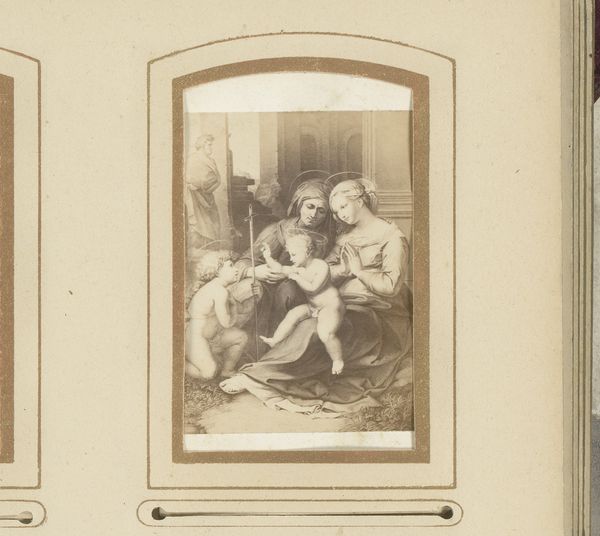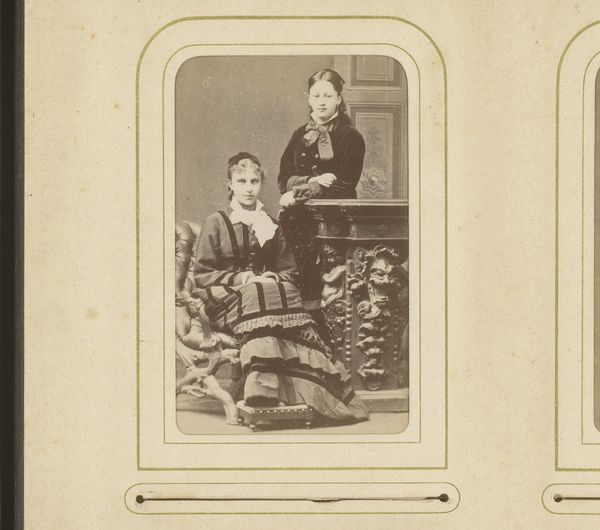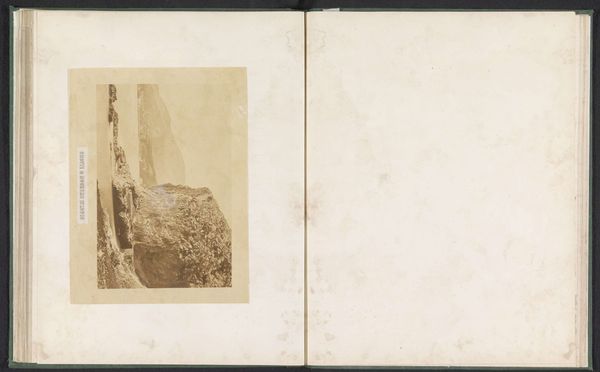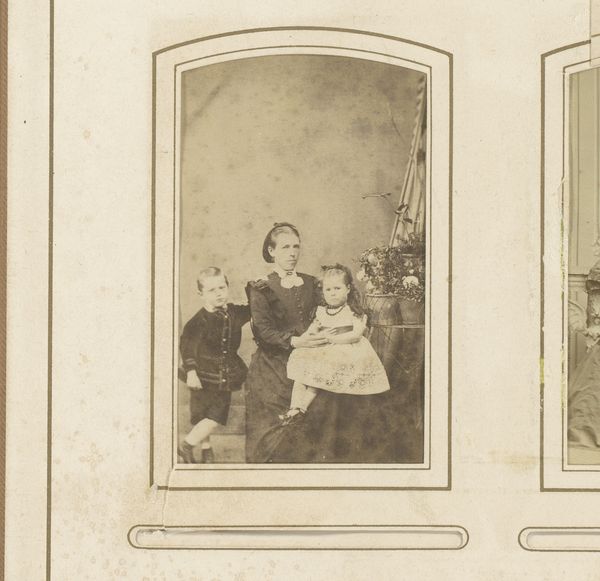
Groepsportret van Bastiaan de Greef met vrouw en drie kinderen rond een tafel in tuin 1864 - 1879
0:00
0:00
leonarddekoningh
Rijksmuseum
photography
#
portrait
#
still-life-photography
#
photography
#
group-portraits
#
genre-painting
Dimensions: height 104 mm, width 58 mm
Copyright: Rijks Museum: Open Domain
This photograph of Bastiaan de Greef and his family was likely made sometime in the mid-19th century, using the wet collodion process. The image, fixed on a metal or glass plate, was a revolutionary, almost alchemical achievement at the time. Think about the labour involved: a photographer like Leonard de Koningh had to be a chemist, a darkroom technician, and a portraitist all in one. The resulting photograph had a precious quality. Each one was unique, and required great skill. Consider the social context in which this image was made. Photography democratized portraiture, making it accessible to a wider segment of society. This image, capturing a family in their garden, speaks to the emerging middle class and their aspirations to capture and preserve their likeness for posterity. The rise of photography studios provided employment and entrepreneurial opportunities. Looking at this image, it's impossible not to reflect on the profound impact of photographic technology on society, blurring the lines between art, craft, and industry.
Comments
No comments
Be the first to comment and join the conversation on the ultimate creative platform.
